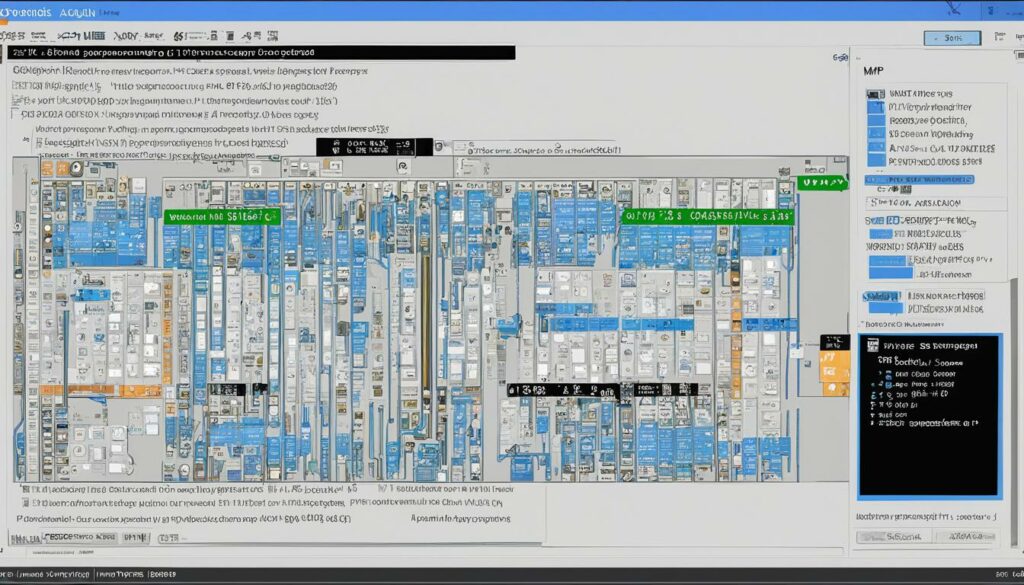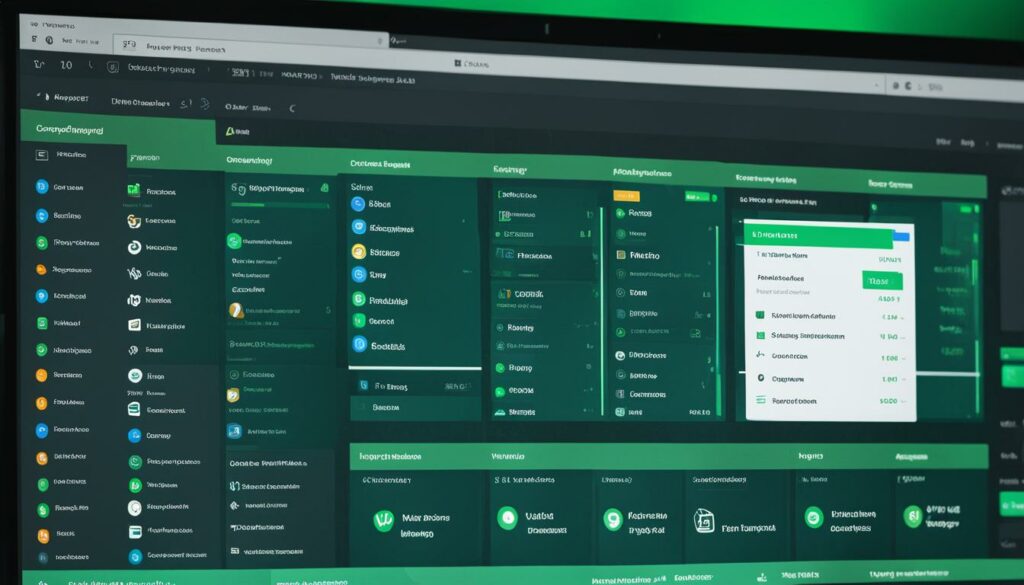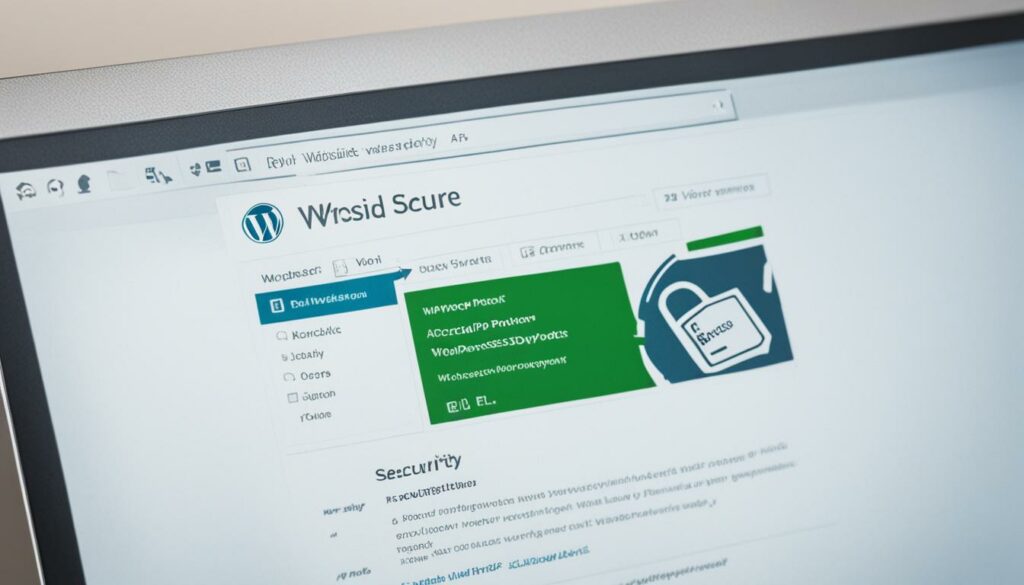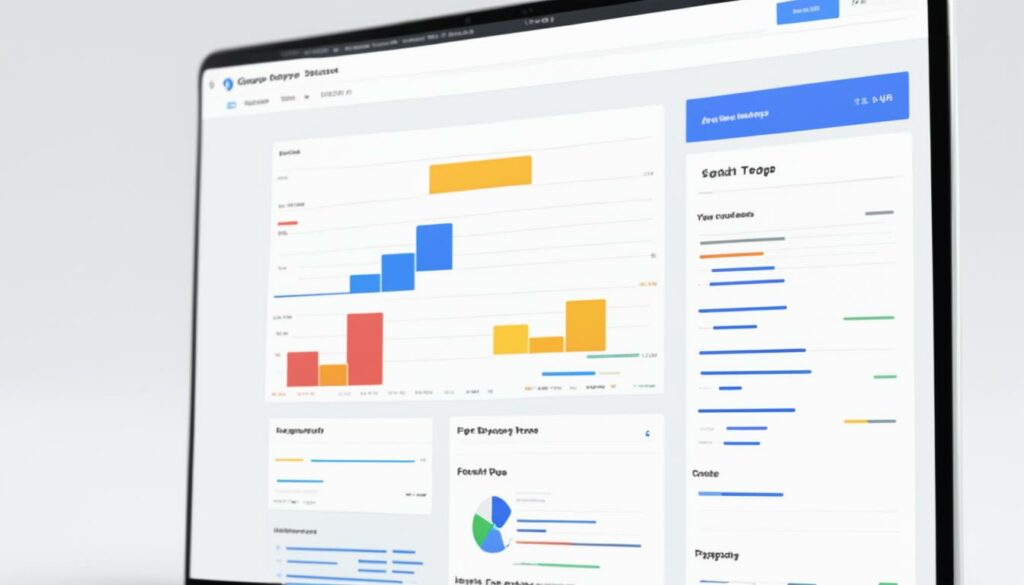Building a local WordPress development environment allows you to make changes to your website offline before applying them to the live site, reducing the risk of errors and disruptions. It offers several benefits, including the ability to test themes and plugins, safely update components, work offline, and improve performance. In this article, we will discuss how to set up a local WordPress development environment and how to deploy your site once it’s ready.
Whether you’re a WordPress beginner or an experienced developer, having a local development environment is crucial for efficient and secure development. By setting up your development environment on your own machine, you can work on your WordPress projects without worrying about affecting the live site. Let’s dive into the process of setting up a local WordPress development environment.
Key Takeaways:
- Setting up a local WordPress development environment allows you to make changes offline before applying them to your live site.
- Local development allows you to test themes, plugins, and updates safely without affecting your live site.
- Working offline improves productivity, and local sites usually run faster, enhancing your workflow.
- Choosing the right tools, such as XAMPP, is crucial for setting up your local development environment.
- Once set up, you can develop, test, and debug your local WordPress site before deploying it to the live environment.
Now that we understand the benefits and importance of a local WordPress development environment, let’s explore the specifics of how to set one up.
The Benefits of Local WordPress Development
Local WordPress development offers numerous advantages that can greatly enhance your website development process. By setting up a local environment, you can enjoy the following benefits:
- Easy Testing of Themes and Plugins: With a local WordPress development setup, you can freely test and experiment with different themes and plugins without making any modifications to your live site. This allows you to ensure compatibility, functionality, and appearance before implementing changes.
- Safe Updates: When you update WordPress core or any components, such as themes or plugins, on your local site, you can ensure that the updates do not cause any conflicts or issues on your live site. This provides a secure and controlled environment for updating and testing.
- Productivity Offline: Local WordPress development allows you to work offline, without the need for an internet connection. This means you can continue your development tasks and make progress even when you don’t have access to the internet, increasing your productivity and flexibility.
- Faster Performance: Local sites typically run faster than live sites because they are not affected by network latency or server traffic. This improved performance speeds up your workflow, allowing for quicker testing, debugging, and development iterations.
By taking advantage of these benefits, you can streamline your development process, reduce errors, and ensure the high quality of your WordPress website. Take the opportunity to set up a local WordPress development environment and experience the advantages firsthand.
BoostedHost offers WordPress Hosting services that can optimize your local WordPress development experience. Sign up now through this link: www.boostedhost.com/wordpress-hosting.
Working with a local WordPress development environment provides various advantages and benefits that can significantly improve your website creation process. Whether you are a beginner or an experienced developer, utilizing a local environment can enhance your productivity and ensure the success of your WordPress projects.
Choosing the Right Tools for Local Development
When it comes to setting up a local WordPress development environment, you have several options available. Let’s take a look at some popular tools that can make your development process smoother and more efficient.
| Tool | Description |
|---|---|
| XAMPP | This cross-platform solution provides all the necessary server components, including Apache, MySQL, and PHP, to run WordPress locally. It’s easy to install and configure, making it a popular choice among developers. |
| WAMP | Similar to XAMPP, WAMP is a Windows-based tool that offers Apache, MySQL, and PHP for local WordPress development. It provides a user-friendly interface and straightforward setup process. |
| MAMP | MAMP is the counterpart of WAMP for Mac users. It provides Apache, MySQL, and PHP, allowing you to run WordPress locally on your Mac machine. It offers an intuitive interface and easy installation. |
| Vagrant | Vagrant is a powerful tool for creating and managing virtual development environments. It allows you to replicate your production environment locally, ensuring consistency and enabling collaboration. |
| Local by Flywheel | Local by Flywheel is a user-friendly tool specifically designed for local WordPress development. It simplifies the setup process and offers advanced features like built-in SSL support and one-click WordPress installations. |
| DevKinsta | Developed by Kinsta, a managed WordPress hosting provider, DevKinsta provides a local development environment that closely matches Kinsta’s hosting infrastructure. It’s tailored for WordPress developers and offers seamless integration with Kinsta’s services. |
For the purpose of this article, we will focus on using XAMPP as the recommended tool for setting up a local WordPress development environment. It is a versatile and reliable cross-platform solution that is widely used by developers.
Having the right tools at your disposal can make a significant difference in your local WordPress development workflow. Let’s explore how to install and configure XAMPP in the next section.
Setting Up XAMPP for Local WordPress Development
XAMPP is a popular choice for setting up a local development environment for WordPress. It supports both Windows and Mac computers, making it versatile and accessible for developers. XAMPP includes all the necessary components to run WordPress locally, such as Apache, MySQL, and PHP, ensuring a seamless setup process. Follow the steps below to install XAMPP on your operating system and get started with your local WordPress development.
Installing XAMPP on Windows
To install XAMPP on Windows, visit the official XAMPP website and download the Windows version of the software. Once the download is complete, run the installer and choose the components you need, including Apache, MySQL, PHP, and phpMyAdmin. Select the installation location on your computer and proceed with the installation process. After the installation is complete, start the XAMPP control panel, and ensure that both Apache and MySQL are running properly. You are now ready to set up your local WordPress environment using XAMPP.
Installing XAMPP on Mac
To install XAMPP on Mac, visit the official XAMPP website and download the Mac version of the software. Once the download is complete, open the DMG file and drag the XAMPP folder to the Applications folder. Launch XAMPP from the Applications folder and start the control panel. From the control panel, start both Apache and MySQL to ensure that the server is running properly. Now you’re ready to begin setting up your local WordPress environment using XAMPP.
Once XAMPP is installed and running, you can proceed to the next section to learn how to install WordPress locally using XAMPP.

Installing WordPress Locally Using XAMPP
Once XAMPP is installed on your local machine, you can start the process of installing WordPress locally. This allows you to work on your website without affecting the live version, ensuring a seamless development experience.
To begin, you need to create a database for WordPress using phpMyAdmin. Open the XAMPP control panel and start the Apache and MySQL modules. Then, open your web browser and go to http://localhost/phpmyadmin. Here, you can create a new database by entering a name and selecting the “Create” button.
Next, you’ll need to download the latest version of WordPress from the official website. Once downloaded, extract the files to a folder on your computer.
Copy the extracted WordPress files to the htdocs folder in your XAMPP directory. If you’re not sure where this folder is located, you can find it by opening the XAMPP control panel and clicking the “Explorer” button.
With the files in place, you can now start the installation process. Open your web browser and enter http://localhost/your-folder-name in the address bar, replacing “your-folder-name” with the name of the folder where you copied the WordPress files. This will launch the WordPress installation wizard.
Follow the on-screen instructions to configure your site, including setting a site title, creating an admin username and password, and choosing your preferred language. Once you’ve completed the setup, click the “Install WordPress” button.
If you already have a live WordPress site that you want to import to your local environment, you can do so by following these steps:
- Export the live site: On your live site, go to the WordPress dashboard and navigate to “Tools” > “Export”. Select the content you want to export (posts, pages, media, etc.) and click the “Download Export File” button.
- Set up the local site: Create a new database in phpMyAdmin for the local site and copy the WordPress files to the appropriate folder in XAMPP as mentioned earlier.
- Import the live site: On your local WordPress installation, go to the WordPress dashboard and navigate to “Tools” > “Import”. Install the “WordPress Importer” plugin if it’s not already installed, and use it to import the XML file you exported from your live site.
By following these steps, you can successfully install WordPress locally using XAMPP. This allows you to develop and test your website without making any changes to the live version. Enjoy the flexibility and convenience of working on your WordPress site offline!
Developing and Testing Your Local WordPress Site
Now that you have set up your local WordPress site, it’s time to dive into development and testing. This stage allows you to make changes, install themes and plugins, create custom page templates, and more, without affecting your live site. It’s your sandbox to experiment and fine-tune before going live.
Testing themes and plugins locally is crucial for ensuring compatibility and avoiding conflicts. You can try out different combinations to see how they work together and decide what works best for your site. This way, you can minimize any potential issues or unexpected surprises when you deploy your site to the live environment.
During the development process, it’s important to have a smooth workflow. Establishing a local WordPress development workflow helps you stay organized and efficient. You can use version control systems like Git to track changes, collaborate with other developers, and roll back modifications if needed. This ensures that you can confidently experiment and iterate on your site without the fear of breaking anything irreversibly.
Debugging is another critical aspect of local WordPress development. Issues and bugs can arise during the development process, and debugging tools like WP_DEBUG and Xdebug can be lifesavers. By using these tools, you can detect and fix any errors or problems that may occur. This debugging process plays a crucial role in creating a seamless and error-free user experience.
Remember, your local development environment is your playground. Take advantage of this environment to iterate, refine, and ensure everything is working as expected before deploying your WordPress site to the live environment.
Local WordPress Development Workflow
Here’s an example of a local WordPress development workflow:
- Set up your local development environment using tools like XAMPP as discussed in the previous sections.
- Import or create a local copy of your WordPress site.
- Install and activate themes and plugins for testing and development.
- Create custom page templates or modify existing ones.
- Make changes to your site’s design, functionality, and content.
- Test your site thoroughly to ensure compatibility, responsiveness, and performance.
- Use debugging tools to identify and fix any issues or bugs.
- Collaborate with team members and stakeholders for feedback and review.
- Once everything is tested and approved, prepare for deployment to the live environment.
By following a well-defined local WordPress development workflow, you can streamline your development process and create a polished, error-free website.
Example of a Debugging Workflow:
Here’s an example of a debugging workflow for WordPress development:
- Enable WP_DEBUG in your WordPress configuration to display error messages.
- Inspect the error message and identify the root cause of the issue.
- Use Xdebug, a powerful PHP debugger, to pinpoint and resolve the error.
- Make the necessary changes to address the issue and test again.
- Repeat the process until the error is resolved.
Understanding and mastering debugging techniques is essential in creating a high-quality WordPress site.
Local WordPress Development Tools Comparison
| Tool | Pros | Cons |
|---|---|---|
| XAMPP | Ease of installation and cross-platform support | Can be resource-intensive |
| Local by Flywheel | User-friendly interface and quick site setup | Only available for macOS and Windows |
| DevKinsta | Lightweight and designed for WordPress development | Currently in beta and limited features |
Choosing the right local development tool depends on your specific needs and preferences. Consider factors such as ease of use, platform compatibility, and available features when making your decision.
Deploying Your Local WordPress Site to the Live Environment
Once you’ve completed developing your local WordPress site and you’re satisfied with the results, it’s time to deploy it to the live environment. This process involves transferring both the files and the database from your local installation to the web server, ensuring that your site is up and running for everyone to see. There are several methods you can use to accomplish this, including manual migration through FTP or by exporting and importing the database.
One popular and efficient tool for simplifying the deployment process is the Duplicator plugin. This plugin allows you to create a complete package of your site, including all the necessary files and the database. With the package in hand, you can easily deploy your site to the live server without any hassle. To get started, follow these simple steps:
- Install and activate the Duplicator plugin on your local WordPress site.
- Navigate to the Duplicator settings and create a new package for deployment.
- Follow the plugin’s instructions to build the package, ensuring that you include both the files and the database.
- Once the package is created, you will be provided with an installation file and an archive file.
- Upload both files to your live server using FTP or any other method provided by your hosting provider.
- Access the installation file through your web browser, and follow the on-screen instructions to set up your site on the live server.
By using the Duplicator plugin, you eliminate the need for manual migration and reduce the chances of encountering errors or missing files during the deployment process. Whether you’re a beginner or an experienced developer, this plugin simplifies the task of moving your site from local to live, ensuring a smooth transition without any complications.
Remember, when deploying your local WordPress site to the live environment, it’s crucial to choose a reliable hosting provider. BoostedHost offers high-performance WordPress Hosting plans that are optimized for speed and security. Sign up now through this link: www.boostedhost.com/wordpress-hosting.
| Method | Pros | Cons |
|---|---|---|
| Manual Migration through FTP |
|
|
| Exporting/Importing the Database |
|
|
| Duplicator Plugin |
|
|
With the Duplicator plugin and the various deployment methods available, moving your local WordPress site to the live environment has never been easier. Choose the method that best suits your needs and start sharing your site with the world.

Managing Local WordPress Development Environments
As a developer, you often find yourself working on multiple local WordPress sites for different projects. To ensure a smooth and efficient workflow, it’s crucial to keep your local development environments organized and manageable. Here are some best practices and tools to help you streamline your process:
1. Use Tools like Vagrant or Docker
Tools like Vagrant or Docker can greatly simplify managing multiple local WordPress sites. They allow you to create isolated environments for each site, ensuring that changes to one site do not affect others. This level of separation helps prevent conflicts and makes it easier to debug and test individual projects.
2. Organize Your Projects with a Local Domain Naming Convention
When working on multiple WordPress projects locally, it’s helpful to adopt a consistent naming convention for your local domains. This will make it easier to differentiate between projects and access them in your web browser. For example, you could use projectname.local or clientname-project.local as your domain naming convention.
3. Keep Projects in Separate Directories
Another way to keep your local development environments organized is to maintain separate directories for each project. This will help you easily locate and manage project files, themes, and plugins. Keeping everything neatly organized will save you time and prevent confusion.
4. Regularly Backup Your Local Sites
Accidents can happen, and local development environments are not exempt from data loss. It’s essential to regularly back up your local WordPress sites to prevent any potential loss of work. You can use plugins like UpdraftPlus or manually back up your site files and databases to an external location or cloud storage.
5. Follow Best Practices for Local WordPress Development
When working on local WordPress development, it’s important to follow best practices to ensure efficiency and maintainability. Some best practices include:
- Utilizing version control with Git to track code changes and collaborate with team members.
- Using a code editor or IDE that suits your workflow to enhance productivity.
- Documenting your development process, including project requirements, decisions, and any troubleshooting steps taken.
Following these best practices will help you stay organized, improve collaboration, and ensure the success of your local WordPress development projects.
By managing your local WordPress development environments effectively, you can save time, avoid conflicts, and maintain clean and organized workflows. Organizing your projects, utilizing tools like Vagrant or Docker, and following best practices will enable you to focus on what matters most: developing high-quality WordPress sites.
Remember, BoostedHost offers reliable WordPress Hosting for optimal performance. Sign up now through this link: www.boostedhost.com/wordpress-hosting.
Local WordPress Development vs. Staging Environment
While local WordPress development is a crucial step for testing and iterating on your website, utilizing a staging environment can bring additional value to your development process. A staging environment functions as a separate server or subdomain where you can test changes before deploying them to the live site. It offers a more realistic environment to ensure seamless transitions from development to production. Not only does a staging environment allow you to thoroughly test your site, but it also enables you to involve clients or stakeholders in the review process, gaining valuable feedback and ensuring their satisfaction.
By combining the advantages of both local WordPress development and a staging environment, you can enhance your development workflow and optimize the quality of your website. The local development environment provides a controlled setting for testing and making changes, allowing you to experiment without affecting the live site. Once you are satisfied with the results, you can then move these changes to the staging environment for further testing and review. This ensures that any potential issues or conflicts are addressed before deploying the final changes to the live site.
“Utilizing a staging environment in addition to a local development environment creates a seamless transition from development to production, ensuring that your website performs optimally and meets the expectations of your clients and stakeholders.”
In summary, while local WordPress development is essential for testing and iteration, incorporating a staging environment into your development process offers numerous benefits. It allows for comprehensive testing in a realistic environment and involves clients and stakeholders in the review process. By leveraging both local development and a staging environment, you can ensure that your website is robust, optimized, and ready for deployment in the live environment.
Updating and Maintaining Your Local WordPress Development Environment
To ensure the security and compatibility of your local WordPress development environment, it is crucial to keep it up to date. Here are some best practices to follow:
Regularly Update XAMPP and Components
To keep your local WordPress environment running smoothly, regularly check for updates to XAMPP and its components, including WordPress itself, themes, and plugins. Updating to the latest versions ensures that you have the latest security patches and bug fixes. This helps safeguard your development environment from potential vulnerabilities.
Secure Your Local Environment
Protecting your local WordPress environment is essential to prevent unauthorized access and potential security breaches. Use strong passwords for all your accounts, including the XAMPP control panel, WordPress admin, and any database-related logins. Regularly change these passwords to minimize the risk of unauthorized access.
Backup Your Local Sites
Regularly backing up your local WordPress sites is crucial to prevent data loss in the event of hardware failure, accidental deletions, or any other unforeseen issues. Set up a backup system that works for you, such as using plugins or manually creating backups of your files and databases. Store these backups in a secure location.
Consider Using Version Control
Using a version control system like Git can greatly help in tracking and managing changes to your code. It allows you to roll back to previous versions if needed and collaborate with other developers efficiently. Set up a Git repository for each of your local WordPress projects to maintain a well-documented history of your development process.
By following these best practices, you can ensure the security and reliability of your local WordPress development environment. Remember to stay updated, secure your environment, regularly back up your sites, and consider using version control. These steps will contribute to a smooth and productive development experience.
For optimal performance and a hassle-free WordPress hosting experience, we recommend WordPress Hosting from BoostedHost. Sign up now through this link: www.boostedhost.com/wordpress-hosting.

Conclusion
Setting up a local WordPress development environment can greatly benefit developers in several ways. It provides a secure and efficient platform to build, test, and debug WordPress sites before deploying them to the live environment. By utilizing tools like XAMPP and following best practices, you can streamline your coding workflow and ensure the success of your WordPress projects.
Whether you’re just starting out or an experienced developer, investing time in setting up a local development environment is well worth it. One of the key advantages is increased productivity. With a local environment, you have the freedom to work offline and make changes without impacting your live site. This allows you to iteratively develop and refine your site, resulting in improved quality and user experience.
Additionally, a local WordPress development environment offers a controlled testing environment. You can safely test themes, plugins, and updates without risking disruptions or errors on your live site. This minimizes the chances of unexpected issues and potential downtime. Moreover, local sites usually run faster, ensuring your workflow remains seamless and efficient.
In summary, local WordPress development empowers developers by providing a safe, versatile, and high-performance environment to build and test websites. By utilizing the right tools and following best practices, you can take full control of your WordPress development process, enhance your productivity, and deliver exceptional websites to your clients or audience. Sign up for WordPress Hosting from BoostedHost to experience optimal performance for your local WordPress development environment. Get started today through this link: www.boostedhost.com/wordpress-hosting.
FAQ
Q: What are the benefits of local WordPress development?
A: Local WordPress development allows you to test themes and plugins without affecting your live site, update components safely, work offline, and improve performance.
Q: What tools can I use for local WordPress development?
A: Popular tools for setting up a local WordPress development environment include XAMPP, WAMP, MAMP, Vagrant, Local by Flywheel, and DevKinsta.
Q: How do I set up XAMPP for local WordPress development?
A: To set up XAMPP, download the software from the official website, run the installer, choose the components, select the installation location, and start the control panel to ensure the server is running properly.
Q: How do I install WordPress locally using XAMPP?
A: To install WordPress locally, create a database for WordPress using phpMyAdmin, download the latest version of WordPress, copy the files to the appropriate folder in XAMPP, and follow the installation process through your local WordPress site in the browser.
Q: How can I develop and test my local WordPress site?
A: With your local WordPress site set up, you can install themes and plugins, create custom page templates, and make changes without affecting the live site. Use debugging tools like WP_DEBUG and Xdebug to identify and fix any issues that arise.
Q: How do I deploy my local WordPress site to the live environment?
A: To deploy your local WordPress site, you can transfer the files and database manually using FTP and export/import methods. You can also use a plugin like Duplicator, which simplifies the deployment process by creating a package of your site that can be easily deployed to the live server.
Q: How do I manage multiple local WordPress development environments?
A: Keep your local development environments organized by using tools like Vagrant or Docker to create isolated environments for each site. Use a local domain naming convention and separate directories for each project. Regularly backup your local sites and follow best practices like version control with Git.
Q: What is the difference between local WordPress development and a staging environment?
A: Local WordPress development allows you to build and test your site offline, while a staging environment is a separate server or subdomain where you can test changes before deploying to the live site. A staging environment provides a more realistic testing environment and involves clients or stakeholders in the review process.
Q: How can I keep my local WordPress development environment updated and secure?
A: Regularly check for updates to XAMPP, WordPress, themes, and plugins. Use strong passwords and keep your software patched. Backup your local sites regularly and consider using a version control system like Git to track and manage changes to your code.
Q: What are the benefits of local WordPress development?
A: Local WordPress development offers numerous benefits, including the ability to build, test, and debug sites before deploying them to the live environment. It enhances coding workflow, increases productivity, and improves site quality.












